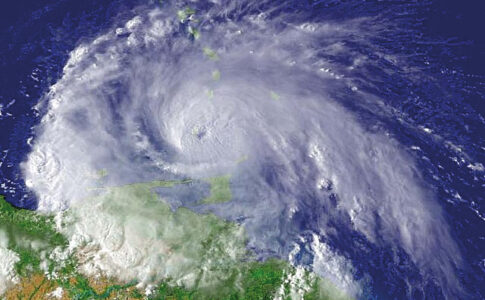Less than two months before the next hurricane season, Anne Laubies, prefect delegate to the representative of the State in the communities of Saint-Martin and Saint-Barthélemy, and Daniel Gibbes, President of the Collectivity of Saint-Martin, gathered the press, to take stock of the preparations for the season, a major issue for the Prefecture and the Collectivity.
From the end of the crisis after Hurricane IRMA, joint work to prepare for the next season was implemented by the State and Community services under the aegis of the Prefect and the President, to improve the existing system and integrate the consequences of IRMA. Numerous meetings have been held on the subject involving private and public actors. A steering committee has been set up and has already met twice. Services have been structured to respond to an upcoming crisis, in particular by bringing their operational decision center closer.
Communication around this preparation will be sequenced until the start of the season with 3 major themes spread over the next 2 months:
- alert to populations
- individual and collective preparation (early May): Cleaning of one's living space, elimination of waste and of any potential danger or projectile, preparation of emergency kits, water and food supplies, choice of a secure fallback location, etc. Neighborhood cleaning will be done in particular during the Community's "clean island" operation next May.
- the procedures to be followed, evacuation instructions and shelters (end of May), for which a precise diagnosis is in progress. The objective for 2018: to triple the reception capacity and make the shelters more autonomous and more operational. Likewise, the intervention procedures of partners and relief (telecoms, water, electricity, health, security, donations, distribution, reception of disaster victims, medical evacuations, etc.) will be communicated upstream of the hurricane season.
Reinforcement of public alert
Alerting populations is a crucial point in managing a crisis, whether in the context of cyclone risk or other natural risks.
The alert is made by several channels:
- On social networks: via the Facebook pages of the Prefecture or the Community, via the Twitter account newly created by the Prefecture. The Community has also developed a mobile application on which a great deal of information will be disseminated to the public.
- By the local media by sending press releases. The media are an essential information relay for the population in the context of top-down alerts.
- By SMS alert emanating from the Prefecture towards the communities, all the institutions and actors of the territory but also emanating from the Collectivity, in its role of relay of the alert, towards the people who would like to subscribe. The latter device is being implemented.
- Warning sirens: the technical implementation studies will be launched by the Collectivity in connection with the SAIP mechanism of the DGSCGC. The commissioning deadline is however 2 to 3 years.
- Physical alert: the territory was divided into sectors, with those responsible for alerting these areas via vehicle patrols and the use of megaphones: Gendarme, Border Police, Territorial Police.
The implementation of these alert systems was tested during the CaribWave exercise on March 15. A defense operational center had been opened and all the actors mobilized.
Delimitation of risk areas
In order to make the triggering of the alert more reliable, significant work has been carried out on the zoning of the various risks.
The mapping of cyclone hazard zones has been reviewed with regard to the latest events, thus making it possible to specify the zones to be evacuated.
A mapping was also carried out on the tsunami risk in partnership with the University of Montpellier as part of the "Exploit" project to determine the refuge areas which will be materialized by sign.
Identification of vital points for the territory
In order to be able to make the communication systems more resilient and in particular to allow their rapid electrical replenishment, the Prefecture and the Community are working on a mapping of sensitive points in the territory, in particular the sites of the antennas and telephone exchanges.
In this order of idea, the cartography will identify all the sensitive points of the territory (energy, trade, banks, pharmacy…) and this with an objective of organization and projection of the means of civil security and public security.
In addition to the work undertaken by the local authorities, the Prefect and the President already invite the population to prepare and to anticipate as much as possible the passage of a possible phenomenon. Everyone must feel concerned by these instructions and be involved in their safety.
8,225 total views






we reassure ourselves by creating a Committee, one more, otherwise nothing new under the sun: Looters at your posts -you will be quiet to start again ...... citizens we take poor care of you
Dear Mr. Yaka, a little easy to comment, right?